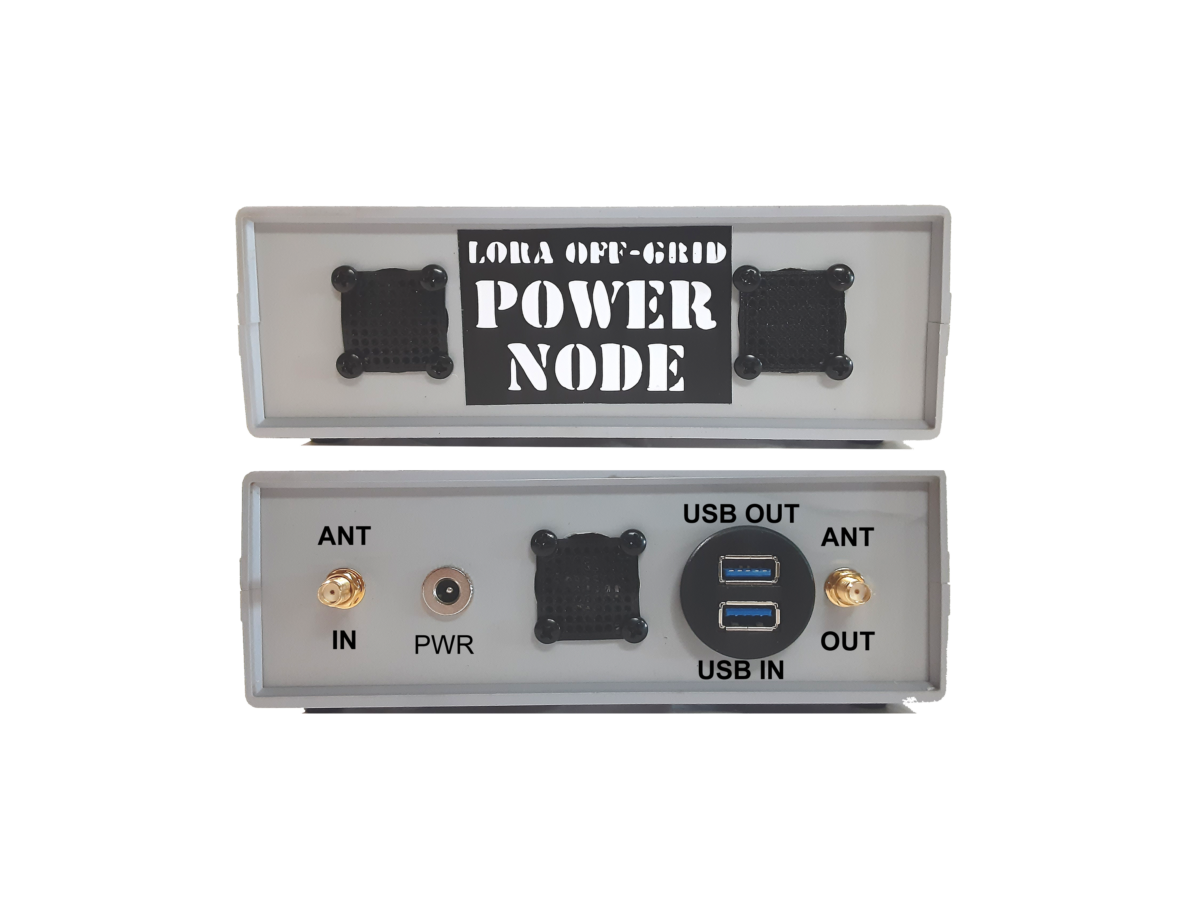Month: May 2024
The Larping Discord Minecrafters On MQTT – What’s The Deal?
As the owner of one of the first ten nodes on the mesh I can say that I have been around since the beginning. I have noticed quite a few changes since then. From emoji names to the kiddie discords, LongFast MQTT has gone from a reasonable place to hang out to romper room almost overnight. I’m not a babysitter and now I don’t even go into LongFast until after 9pm when the children have all gone to bed.
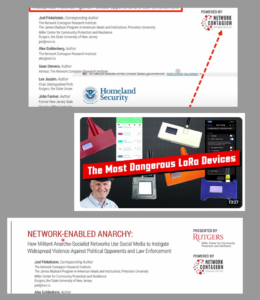 I tell myself not to sweat it as the more nodes on the mesh the better, but, as we know, the PTB have been full on slamming LoRa/Meshtastic as a place where the Mexican drug cartels and Hamas terrorists like to do their business because it’s the last place on earth that private messaging can be encrypted and now, it’s even listed on the FBI and Homeland Security websites.
I tell myself not to sweat it as the more nodes on the mesh the better, but, as we know, the PTB have been full on slamming LoRa/Meshtastic as a place where the Mexican drug cartels and Hamas terrorists like to do their business because it’s the last place on earth that private messaging can be encrypted and now, it’s even listed on the FBI and Homeland Security websites.
And then it dawned on me, of course the feds have infiltrated it and are just stinking the place up trying to either make people go away or trying to setup these kiddie minecrafters in some crazy psyop through their discord servers or otherwise just as hey have done a million times across thousands of platforms. So, it is what it is. The kiddies have no idea they might be getting setup to be used as an eventual take down going the tiktok route.
FEDs generally use the lowest IQ denominators for solicitation and their tactics don’t change from place to place on the internet. They are famous for using childish emojis and picture names and have become synonymous with undercover live action role playing and child predation, so anytime I see it, I know what I am probably dealing with.
My advice to new meshers is, be aware that operations could be occurring and you might want to stay off LongFast for the foreseeable future. Make a private channel for you and your friends and if you want some good mesh advice, find a HAM!
Testing “Project PowerNode” – the 915MHz LoRa Amplifier / Booster
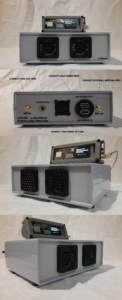 Upon hearing of the new build from a well known HAM and finally getting our hands on the final production LoRa Off-Grid PowerNode we wanted to run it though some range trials. But first, we needed to have a baseline to work from using the same setup without the Power Node using two T-Beam Supremes.
Upon hearing of the new build from a well known HAM and finally getting our hands on the final production LoRa Off-Grid PowerNode we wanted to run it though some range trials. But first, we needed to have a baseline to work from using the same setup without the Power Node using two T-Beam Supremes.
One stationary unit on a mast 30ft off the ground and one unit placed in the vehicle with an external antenna mounted to top of vehicle. After doing some range tests our results were as expected with the horrible terrain on a dreary rainy Sunday. Our average distance was between 3.8 and 4.2 miles. Not bad in consideration of the terrain we were working with which I honestly didn’t think we would get a mile knowing what I do about LoRa devices and the 915MHz band we were working in.
As you can see from the map, our footprint was tiny using stock equipment.
Testing, Parameters and Equipment:
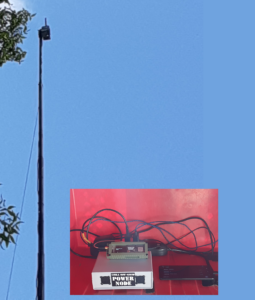 With our baseline testing down now it was time to get to the meat of this testing of the LoRa Off-Grid PowerNode. No changes to the equipment were made except to insert the PowerNode at the stationary T-Beam. Again, this T-Beam antenna was installed on a 30ft mast as stated in the baseline test.
With our baseline testing down now it was time to get to the meat of this testing of the LoRa Off-Grid PowerNode. No changes to the equipment were made except to insert the PowerNode at the stationary T-Beam. Again, this T-Beam antenna was installed on a 30ft mast as stated in the baseline test.
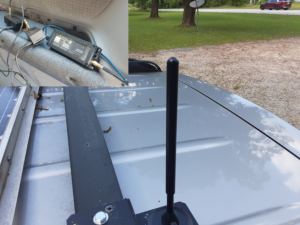 The antenna’s on the mast and on the exterior of vehicle were Bingfu Lora Antennas 915mhz 3dbi Omnidirectional from Amazon [https://www.amazon.com/dp/B09XMH2MM6 ]
The antenna’s on the mast and on the exterior of vehicle were Bingfu Lora Antennas 915mhz 3dbi Omnidirectional from Amazon [https://www.amazon.com/dp/B09XMH2MM6 ]
Environmental & Terrain Parameters:
Environmental conditions were; 70 degrees F, Cloudy, Rain and the terrain was very rural, mostly old growth forestry with a smattering of farms, residential subdivisions and sparse industrial.
So the conditions and terrain were about as bad as one could find when attempting to test a UHF RF product as old growth forestry is a ground propagation RF killer. Elevation differences were between 360ft ASL – 420ft ASL +- 20ft with the stationary node being at 384ft ASL.
Testing and Results:
Driving out in all available directions one could drive, our range testing gave us a nominal 40+ mile distance between the two nodes with a few 50+ mile acks. The only time we didn’t get acks was when we were in very, very low dips in the terrain or blocked by extremely large industrial farm buildings that consumed the horizon. 97% of all TX RX was acknowledged on both ends.
Summarized Conclusions:
After the testing concluded and the CSV files were tallied up we all sat in utter disbelief. We were literally stunned beyond any and  all explanation. We had known before-hand the specifications listed for this LoRa amplifier / booster but it wasn’t until we looked at the phenomenal distances driven and comparing the coverage maps between the baseline and final that the realization sank in. Going from a tiny speck of coverage on the map to the undeniable multi county coverage splash was absolutely astounding to the 4 very qualified radio guys in the little HAM shack on the side of the highway. We all knew that the design builder of the device was well known for his custom repeater and amplifier builds in the HAM community, it seems that everyone has either touched or heard of one of his builds. A very un-assuming and down to earth gentleman with a rich and seemingly innate understanding of RF electronics that most cannot even begin to grasp. I knew right there and then that he had single handedly changed the LoRa game entirely and his callsign is K4ZXX.
all explanation. We had known before-hand the specifications listed for this LoRa amplifier / booster but it wasn’t until we looked at the phenomenal distances driven and comparing the coverage maps between the baseline and final that the realization sank in. Going from a tiny speck of coverage on the map to the undeniable multi county coverage splash was absolutely astounding to the 4 very qualified radio guys in the little HAM shack on the side of the highway. We all knew that the design builder of the device was well known for his custom repeater and amplifier builds in the HAM community, it seems that everyone has either touched or heard of one of his builds. A very un-assuming and down to earth gentleman with a rich and seemingly innate understanding of RF electronics that most cannot even begin to grasp. I knew right there and then that he had single handedly changed the LoRa game entirely and his callsign is K4ZXX.
